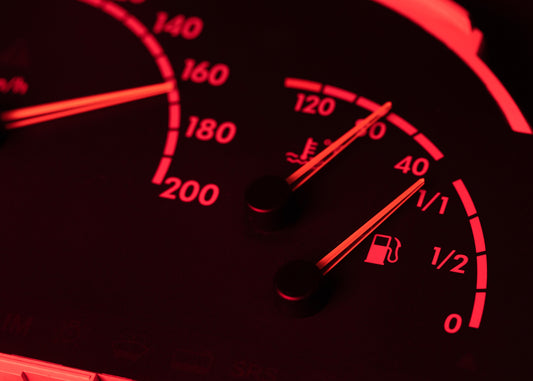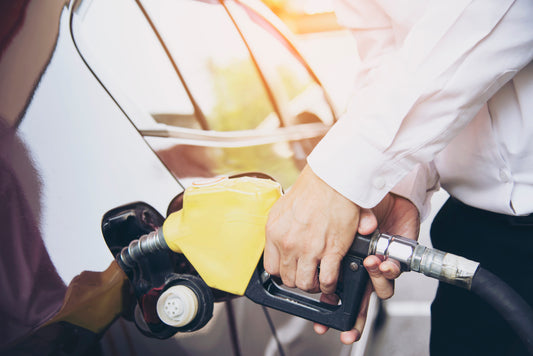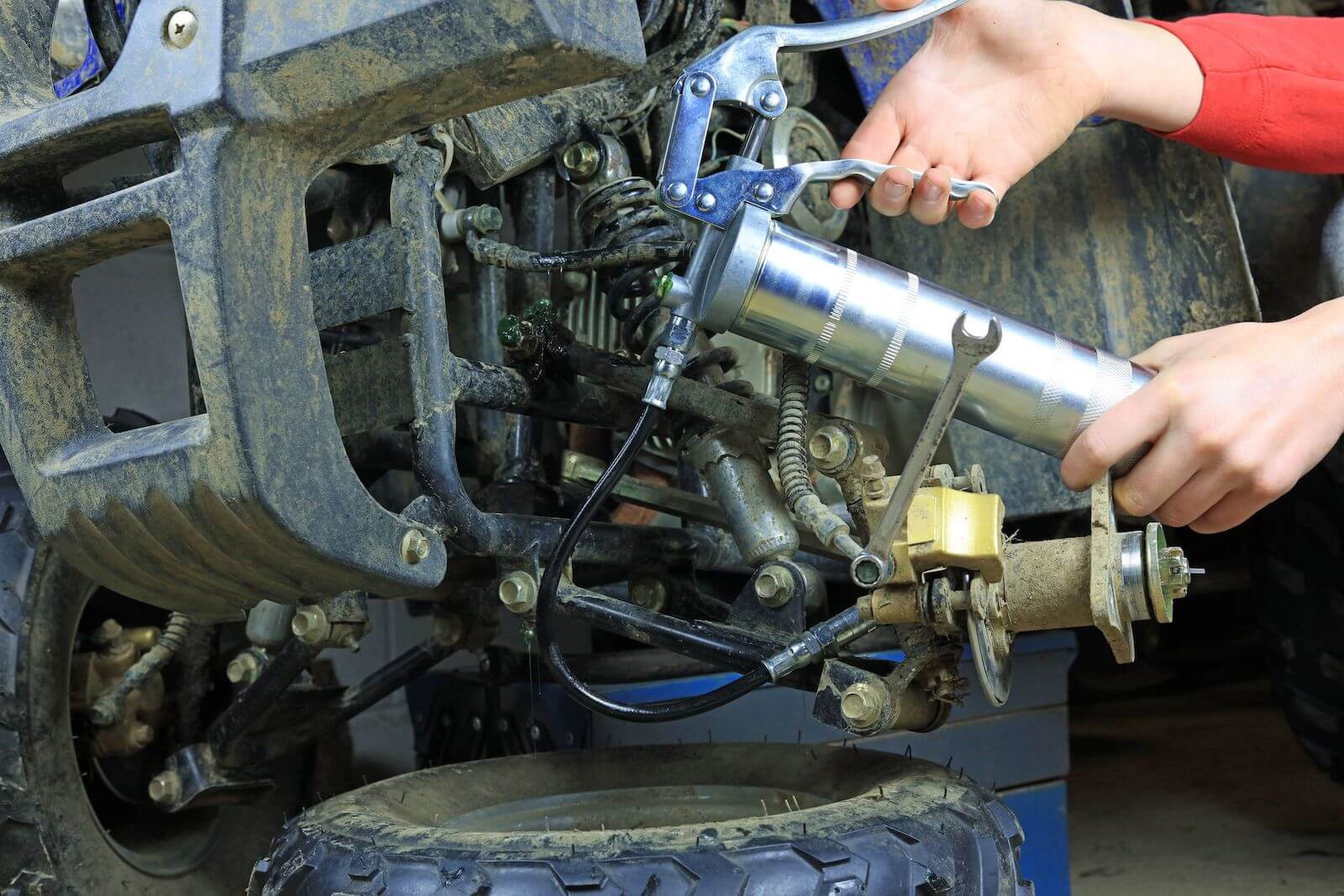Maintaining proper engine oil pressure is crucial for the smooth operation and longevity of your vehicle. It ensures that every moving component of the engine stays well-lubricated, preventing friction and damage.
However, there can be instances when the engine oil pressure drops below the optimal level, leading to the potential for engine failure.
This guide aims to help you understand what engine oil pressure is, the causes and signs of low engine oil pressure, and how to diagnose and fix the issue. By the end of this guide, you’ll be equipped with the knowledge to take care of your engine and keep your car running smoothly for years to come.
Understanding Engine Oil Pressure
Engine oil pressure is essentially the force with which motor oil is pushed through various channels, tubes, and passages by the engine’s oil pump to lubricate critical moving parts. This lubrication process not only reduces friction between these components but also helps in heat control, as the oil absorbs heat generated from engine parts rubbing against each other.

The oil pressure is measured in pounds per square inch (PSI) and usually varies depending on the car’s engine type, design, and oil viscosity. It’s critical to maintain the manufacturer’s recommended oil pressure levels at various engine speeds to ensure the longevity of engine oils in the motor.
Typically, oil pressure gauges or sensors installed in the vehicle measure oil pressure in real-time. When working correctly, these devices notify the driver if pressure of oil drops to below a safe threshold by triggering a warning light on the dashboard.
Note: Maintaining the oil’s efficiency is critical for preserving the right oil pressure. Using high-quality oil additives, like AirTec High-Class Micro-Ceramic Oil Additive, can enhance the performance of all conventional semi- and fully synthetic engine oils, increasing horsepower, improving fuel economy, and reducing wear.
AirTec High-Class Micro-Ceramic Oil Additive
HIGH -CLASS Micro-ceramic lubricating oil additive works with all conventional, semi- and fully synthetic engine and gear oils. It is a selected combination of the most modern high-tech solid ceramic lubricants, making it a world leader in ceramic additives.
shop nowSymptoms and Causes of Low Oil Pressure Problems
Here are a few causes and signs of low oil viscosity and low oil pressure problems.
Causes
There are several reasons why your engine might experience low oil pressure. Some of the most common causes include:
Insufficient oil level: A low oil level in the engine is one of the most common reasons for low oil pressure. Make sure to check the oil level regularly and top up as needed.
Old or degraded oil: Over time, the engine oil can break down or become contaminated, leading to reduced efficiency and lower oil pressure. It’s essential to change your engine oil at the recommended intervals.
Faulty oil pressure sensor or gauge: Inaccurate readings can occur if the oil pressure sensor or gauge is faulty. In this case, the underlying issue is not with the oil pressure itself but with the measuring devices.
Worn or damaged oil pump: The oil pump is responsible for circulating the oil throughout the engine. Over time, wear and tear can lead to reduced pumping efficiency, resulting in low oil pressure.
Blocked or restricted oil passages: If the oil passages in the engine become blocked or restricted due to debris or sludge, the oil flow will be hampered, leading to low oil pressure.
Signs and Symptoms
Identifying low engine oil pressure early can help you address the issue before it leads to severe engine damage. Some of the most common signs include:
Oil pressure warning light: The most obvious sign of low oil pressure is the warning light on your dashboard. If the light comes on, it’s essential to check the oil level and pressure immediately.
Unusual noises: Low oil pressure can cause increased friction between engine components, leading to knocks, ticking, or whining sounds.
Poor engine performance: Low oil pressure may lead to reduced engine power, poor acceleration, and rough idling.
Overheating: Insufficient oil pressure can result in increased friction, leading to higher engine temperatures and even overheating.
If you notice any of these signs, it’s essential to diagnose and address the issue as soon as possible to minimize potential engine damage.
How to Fix Low Engine Oil Pressure (Step by Step)?
Low engine oil pressure has serious implications on your vehicle’s performance and health. It can be caused due to various reasons, including failing oil pump, clogged oil filter, or even low oil level in the engine.

The following are comprehensive, actionable steps you can take to fix low engine oil pressure:
Step 1: Verify the Engine Oil Level
The initial step you should take when handling low oil pressure is to verify the current oil level. To do this, remove the oil dipstick, wipe it clean, then reinsert it back into the engine, and pull it out once more. Check the position of the oil mark on the dipstick. If it’s below the “Add” or “Low” line, it means you need to put in more engine oil.
If you find the oil level is low, consider using AirTec High-Class Automotive Oil Additive to top up.
Air-Tec HIGH-CLASS Automotive Oil Additive
The complex organic compounds found in HIGH-CLASS Automotive Oil Additive provide unmatched friction reduction and exceptional wear reduction and protection.
shop nowStep 2: Replace your Engine’s Oil Filter
Another common cause of low oil pressure is a clogged oil filter. Over time, the filter can accumulate dirt and debris, lowering the oil pressure. You can manage this situation by replacing the oil filter. As a rule of thumb, it’s usually recommended to change the oil filter each time you change your engine oil.
Step 3: Inspect and Replace the Oil Pump, If Needed
In your engine, the oil pump plays a crucial role in using enough oil and sustaining adequate oil pressure. If your oil pump happens to be dysfunctional, it is recommended to replace it, which should effectively solve the issue of low oil pressure. Be aware that this procedure requires specific tools, knowledge and even experience, so it might be wisest to entrust a professional mechanic with this task.
Maintaining the oil pump includes using high-caliber greases. AirTec Grease G200 Multi-Purpose Plus or AirTec Grease KH150 Full Synthetic from our store offers excellent lubrication to enhance the performance of your oil pump.
In sum, while solving low engine oil pressure can seem daunting, following these steps carefully and accurately will definitely help in rectifying the front oil pan issue. Please note that if experience low oil pressure frequently, it might be indicative of a more serious, underlying mechanical problem. In such cases, it’s recommended to consult a professional.
Preventing Low Oil Pressure
Maintaining a healthy engine oil pressure is a crucial aspect of vehicle maintenance.

Here are some preventive measures you can take to minimize the risks of experiencing low engine oil pressure:
Regular Oil Changes: This is perhaps the most effective way to prevent low engine oil pressure. Over time, engine oil collects dirt and debris, becoming less effective at lubricating. Changing the oil at the manufacturer’s recommended intervals ensures the oil remains clean and effective.
Use the Correct Type of Oil: Not just any oil will do for your vehicle. Different engines require different types of oil, which vary in their viscosity, or thickness. Using the wrong type of oil can lead to low oil pressure. Always use the type of oil recommended by your vehicle’s manufacturer.
Regularly Check your Oil Level: Checking your engine’s oil level frequently can help detect an issue before it becomes a bigger problem. Some vehicles have an oil pressure gauge in the dashboard; if you notice it’s steadily moving towards a lower reading, it could be a sign of low oil pressure.
Avoid Aggressive Driving: High-speed driving, sudden accelerations, and braking can all lead to faster degradation of engine oil, which can ultimately decrease oil pressure. It’s recommended to adopt a moderate driving style to prevent this.
It’s important to remember that if you’re frequently encountering low oil pressure, it could be a sign of a deeper mechanical issue. In such cases, it’s best to consult with a professional mechanic. Regular maintenance and oil change is the key to avoiding such issues
Using high-quality engine oil and additives, such as AirTec High-Class Automotive Oil and AirTec High-Class Micro-Ceramic Oil Additive, you can ensure that your oil pressure stays within the recommended range. These products help to maximize engine performance and prolong its life.
Air-Tec HIGH CLASS Injector Cleaner
Air-Tec High Class Injector Cleaner cleans an engine’s fuel system, removing harmful oil, carbon, sludge, and resin build up. All Air-Tec High Class products are produced in Germany and held to the industry highest standards, ensuring our products meet and exceed your expectations.
shop nowConclusion
Maintaining the correct pressure in the engine oil is paramount for the smooth operation and longevity of your car’s engine. Low oil pressure might sound like a minor issue, but it can lead to severe engine damage if left unattended. This article has aimed to arm you with the knowledge to identify, fix, and prevent issues with oil pressure.
Keep an eye on your oil level and quality, maintain regular oil and filter changes, perform regular maintenance checks, disposing of engine oil, and don’t hesitate to seek professional help when necessary. By consistently implementing these tips, you are taking crucial steps towards ensuring a long and healthy life for your vehicle.
Frequently Asked Questions (FAQs)
1. What causes low engine oil pressure?
Low engine oil pressure can arise from numerous factors, including a low oil level, old or degraded oil, a clogged or dirty oil filter, a faulty oil pressure sensor or gauge, a worn or damaged oil pump, or blocked or restricted oil leaks or passageways.
2. Is it OK to drive with low oil pressure?
Driving with low oil pressure is not recommended. It can lead to increased friction between engine components, resulting in damage and potentially catastrophic engine failure. If your oil pressure warning light comes on while driving, it’s best to stop the car safely and investigate the oil supply issue.
3. How do I increase my oil pressure?
You can increase your oil pressure by ensuring the oil level is within the manufacturer’s recommended range, using high-quality oil that meets your engine’s specifications, changing your oil filter regularly, keeping oil passageways clean, and making sure your oil pump is in good condition.
4. How serious is low engine oil pressure?
Low engine oil pressure is a serious issue that can lead to increased friction, overheating, poor engine performance, and even complete engine failure. It’s important to address low oil pressure issues as soon as they are identified to prevent further damage.
5. Will adding oil help low oil pressure?
Adding oil can help if the oil level in the engine is too low, as insufficient oil can hamper the pump’s ability to maintain pressure. However, merely adding oil may not solve the problem if there are other issues, such as degraded oil, a dirty filter, or a worn oil pump. Therefore, it’s critical to diagnose and address the root cause of the low oil pressure.









